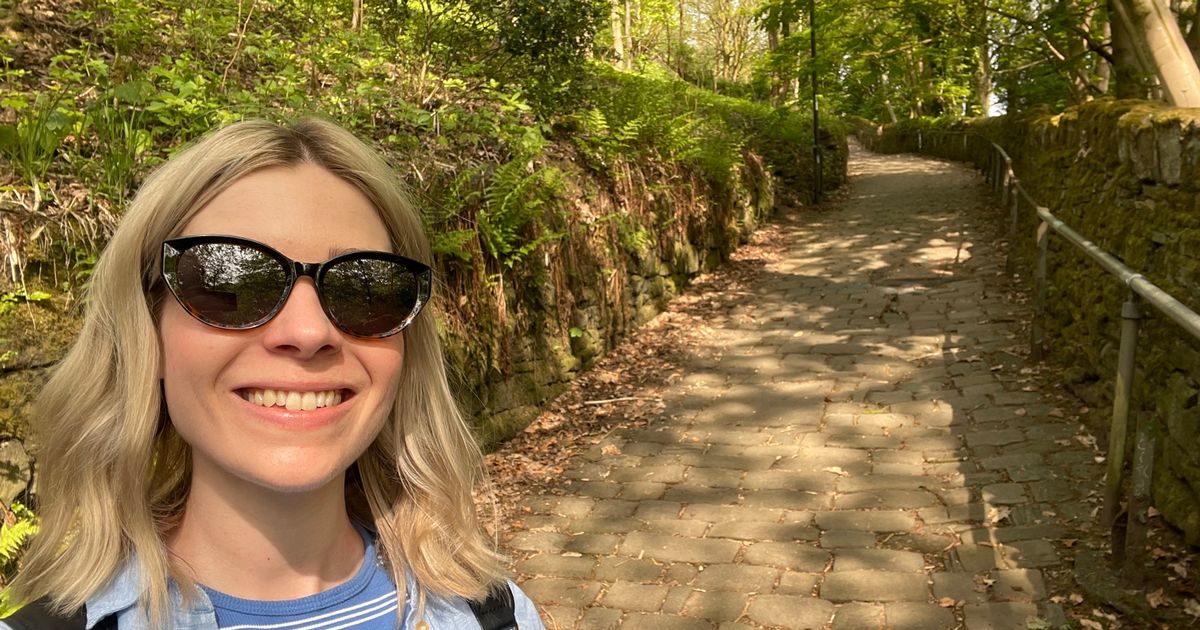It has beautiful cottages, a ruined church and even a village dungeon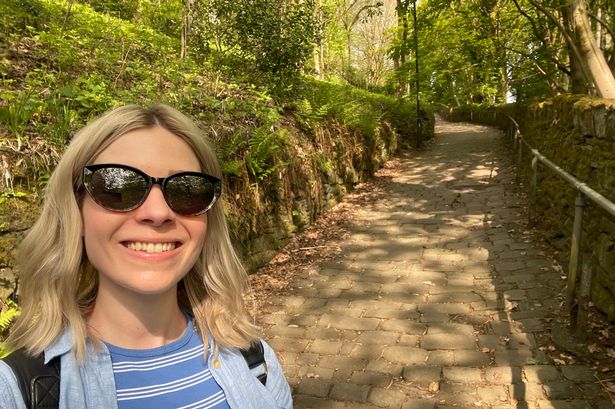 (Image: MEN Staff)
(Image: MEN Staff)
You could easily miss the footpath leading you to the Yorkshire village of Heptonstall, perched on a hill above the town of Hebden Bridge. A steep, cobblestone affair, the trail is marked by one small sign that reads ‘footpath to Heptonstall’.
A second sign states ‘unsuitable for motors’ and when you see that you know you’re in for some achey calves.
During a recent trip to Hebden Bridge I decided to take this path and see where it leads to. Luckily for me, and my calves, it was a gamble that paid off.
It led me to a village packed full of history, and one that’s so beautiful and untouched by modern life that it really does feel like a film set.
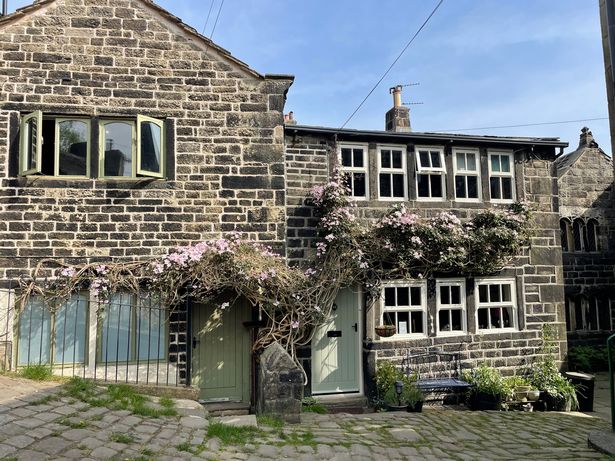 MEN reporter Liv Clarke explored the village of Heptonstall (Image: MEN Staff)
MEN reporter Liv Clarke explored the village of Heptonstall (Image: MEN Staff)
Older than its neighbour down in the valley, Heptonstall dates back to Saxon times and was mentioned in the Domesday Book survey of 1068. In 1643 it was the site of a battle during the early part of the English Civil war, and later became a centre for hand-loom weaving. Not a bad biography for a village of around 1,340 people.
Hebden Bridge may get all the attention these days, yet Heptonstall is worthy of a visit in its own right and has no shortage of fascinating features. Arriving into the village following my steep ascent, it really did feel like stepping into a filmset.
There’s hardly a car to be seen and hardly a person around, either. After consulting a map of the town at a small village green I set off to explore the village on foot.
Walking along (or rather up, as the inclines never cease in this place) Town Gate, I pass terraces of gritstone cottages and the tiny village Post Office, a crate of empty milk bottles sat outside in the late morning sun. The two village pubs are on this road, The White Lion and The Cross Inn, although both were closed during my visit.
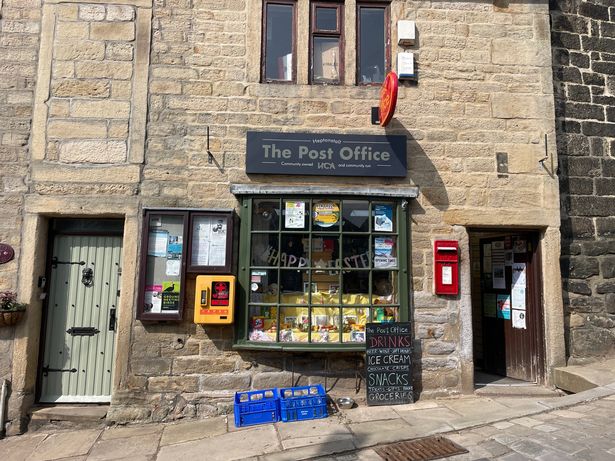 The village Post Office (Image: MEN Staff)
The village Post Office (Image: MEN Staff)
Following a sign post for the village museum, I take a left turn down a small alley sandwiched between two terraces.
The museum is housed in a Grade-II listed building, initially built as a warehouse, which dates back to 1600. In 1771 it was converted into a Grammar School and after closing in 1889, it was occupied by the Yorkshire Penny Bank until 1954. In 1972 it was turned into a museum.
Sadly when I arrived it was closed. It’s open Thursday to Sunday from 11am until 4.30pm, so perhaps a Tuesday morning was an ambitious time to visit a small village museum, although this really did to add to the feeling that Heptonstall really is a film set.
But the real gem of the village was to be found just around the corner: its two churches, one ruined, the other very much still in use which stand next to each other.
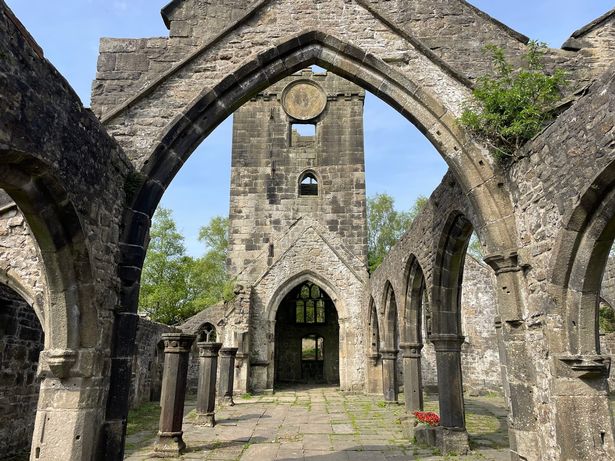 The remains of the St Thomas a Becket Church(Image: MEN Staff)
The remains of the St Thomas a Becket Church(Image: MEN Staff)
While the St Thomas the Apostle Church appears like any other you’d find in an English village, only a few footsteps from it are the remains of the St Thomas a Becket Church.
It was damaged by a gale in 1847 and the residents of the village decided to build a replacement, but leave the other church to lie in ruin. Today the walls, pillars, tower and porch remain, like a skeleton, and visitors are free to explore it.
Literature fans may be eager to seek out the grave of American poet Sylvia Palth, who is buried in the graveyard extension close to the church. She was married to Poet Laureate Ted Hughes, from nearby Mytholmroyd.
Leaving the churches behind, I picked up Church Street, walking past a neat row of cottages with big windows which were designed to allow light in for weaving, a signature feature of Heptonstall’s buildings.
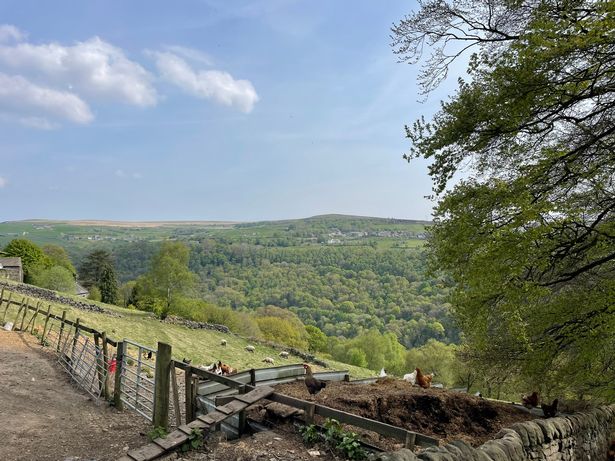 The breathtaking views of the valley below (Image: MEN Staff)
The breathtaking views of the valley below (Image: MEN Staff)
The beauty of Heptonstall’s location is that you’re never too far from the open countryside. Heading down Northgate, I came across a public footpath which led me down to Hetponstall’s Methodist Chapel. Founded in 1764 it’s one of the oldest in the world and still in use today.
Following the path downhill, the village’s buildings give way to a breathtaking vista of the wooded valley below. After walking around Heptonstall’s narrow streets, it felt rather surprising to be out in the open countryside again.
I took the footpath back towards Heptonstall, passing the Pinfold Picnic Area along the way. Navigating a dirt track guided by several enthusiastic chickens, I came across another delight before returning to the main street: the village lock-up.
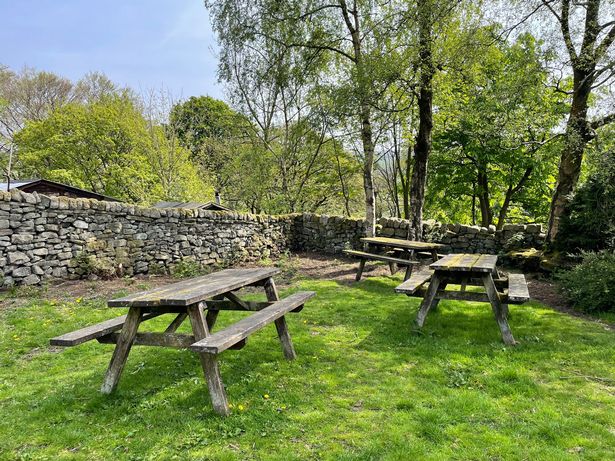 The Pinfold Picnic Area(Image: MEN Staff)
The Pinfold Picnic Area(Image: MEN Staff)
Now just a small wooden door with a tiny barred window, a plaque above it stated: “The dungeon or lock up. In use in the early 19th century”. I peeked through the window expecting to see the village drunk shackled to the wall, but today it’s clearly just used for storage. Probably for the best.
Returning back to the main road, it truly had felt like I’d been exploring a film set. In fact you probably have seen Heptostall on your TV screen as it’s featured in the BBC’s Happy Valley and The Gallows Pole.
One thing is for sure, I will be returning to Heptonstall – but at a time when everything’s open.
You can walk to Heptonstall from Hebden Bridge, which is accessible via direct train from Manchester Victoria. Alternatively you can drive, and there is free parking at Towngate car park (HX7 7LW) and the Bowling Green Car Park (HX7 7LT).
For more of the latest What’s On news, click here.
